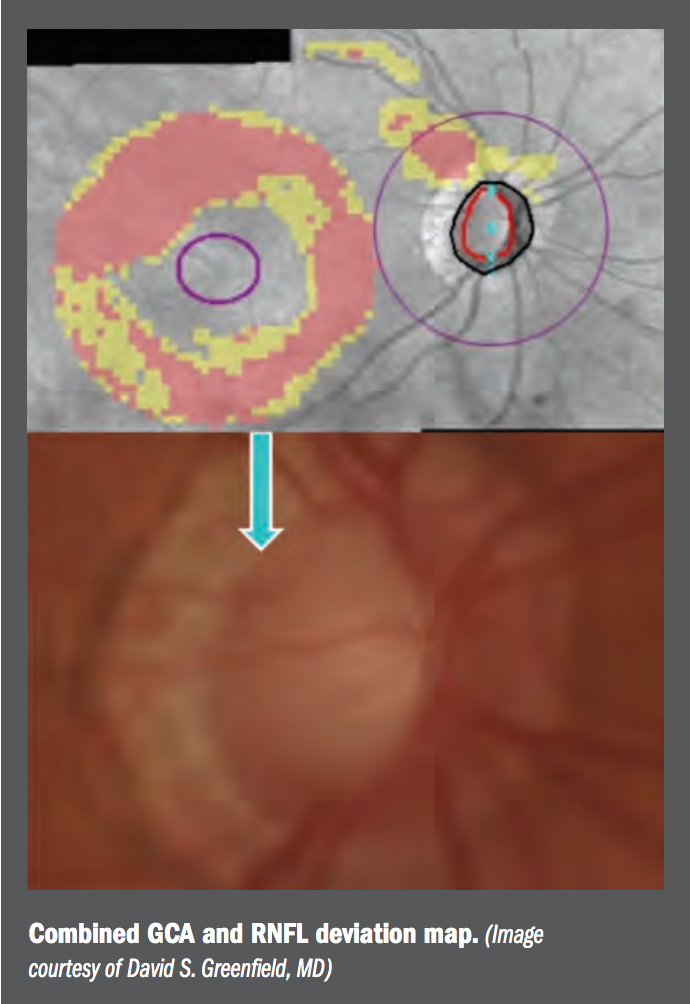Article
Structure-function discordance common in glaucoma
Author(s):

When monitoring for glaucoma progression, there is often a lack of agreement between results from visual field and structural imaging tests. Such discordance can occur for a number of reasons, with a variety of approaches for reconciling these differences.
This article was reviewed by David S. Greenfield, MD

Structural and functional measurements are both necessary to monitor for glaucoma progression, but their findings often do not coincide.
David S. Greenfield, MD, has reviewed data on the frequency of test discordance, contributing factors, and strategies to help reconcile the differences and improve agreement.
Related: Reshaping medical treatment of glaucoma management
A common phenomenon
Dr. Greenfield, professor of ophthalmology, Douglas R. Anderson Chair in Ophthalmology, Co-Director Glaucoma Service Bascom Palmer Eye Institute, University of Miami Miller School of Medicine, Miami, said mechanisms for discordance emphasized that structural and functional assessments in glaucoma often disagree.
Supporting his comment were data from a recently published study conducted at Bascom Palmer Eye Institute, [Nguyen AT, et al. Ophthalmol Glaucoma. 2019;2:36-46].
The study analyzed data from 147 eyes that were followed annually for a mean of almost six years with visual field testing and OCT measurements of the retinal nerve fiber layer (RNFL) and macula. It found that progression was documented by all three metrics in only 7% of eyes.
“Longitudinal changes in retinal nerve fiber layer thickness should agree with changes in macular ganglion cell measurements, which should agree with serial changes in visual function using standard automated perimetry,” Dr Greenfield said. “Yet many patients with glaucoma progression will develop isolated changes in structural tests without detectable changes in visual function, and vice versa.”
The fact that there is a nonlinear relationship between structure and function is one factor that contributes to discordance between the findings of their respective diagnostic tests.
Related: The Magnificent 7: How many glaucoma treatments are too many?
“The relationship between standard automated perimetry mean deviation (MD) and retinal ganglion cell (RGC) counts is very much dependent on the stage of disease,” said Dr. Greenfield.
He explained, “In eyes with early glaucomatous damage, changes in RGC counts correspond to small changes in MD but much larger changes in RNFL

thickness measurements over time. Conversely, in eyes with advanced glaucoma, changes in RGC counts correspond to larger changes in MD but only small or no changes in average RNFL thickness.”
Related: The importance of PERG in detecting early-stage glaucoma
Poor test sensitivity is another factor that can account for discordance between structural and functional tests. In particular, eyes with severe glaucoma can reach a measurement floor below which further changes are no longer detectable.
Differences in the methods for analyzing change represent another issue. Regions of retinal topography may not directly correspond with the same regions of the visual field, and testing strategies may differ based upon linear or logarithmic scaling.
Measurement variability and poor quality data can also lead to discordance. Poor image quality is common and may be seen in 25% to 30% of scans and often result from eye movement, shadowing associated with ptosis or eyelid blink, or algorithm failure.
Related: Innovations focusing on improved patient experience
Cases with discordance
The first thing that clinicians should do when structural and functional results disagree is to repeat testing in eyes with poor quality imaging or unreliable visual fields.
Incorporating ancillary diagnostic testing, such as central 10° visual fields and macular ganglion cell measurements, are also very useful adjuncts to reconcile structure-function discordance.
Clinicians should recognize that challenges with imaging exist in eyes with severe glaucoma, given the increased measurement variability, reduced signal-to-noise ratio, potential for algorithm failure, and measurement floor which may limit progression detection, Dr. Greenfield said.
Related: Can glaucoma patients benefit from cell therapy approach?
Dr. Greenfield also recommended using change detection algorithms which incorporate statistical models to measure glaucoma progression.
“Avoid using summary parameters, such as average thickness values, because they tend to be insensitive to localized change,” he said. “It is very important to carefully assess the rates of progression in order to determine the velocity of change.”
When assessing discordance between SAP and OCT measures, clinicians should carefully examine the optic nerve for disc hemorrhage because clinical trial evidence supports its role as a biomarker for progression.
Read more glaucoma content here
David S. Greenfield, MD
E: dsgreenfield@med.miami.edu
This article was adapted from Dr. Greenfield's presentation at the 2019 American Academy of Ophthalmology annual meeting.
Newsletter
Don’t miss out—get Ophthalmology Times updates on the latest clinical advancements and expert interviews, straight to your inbox.




